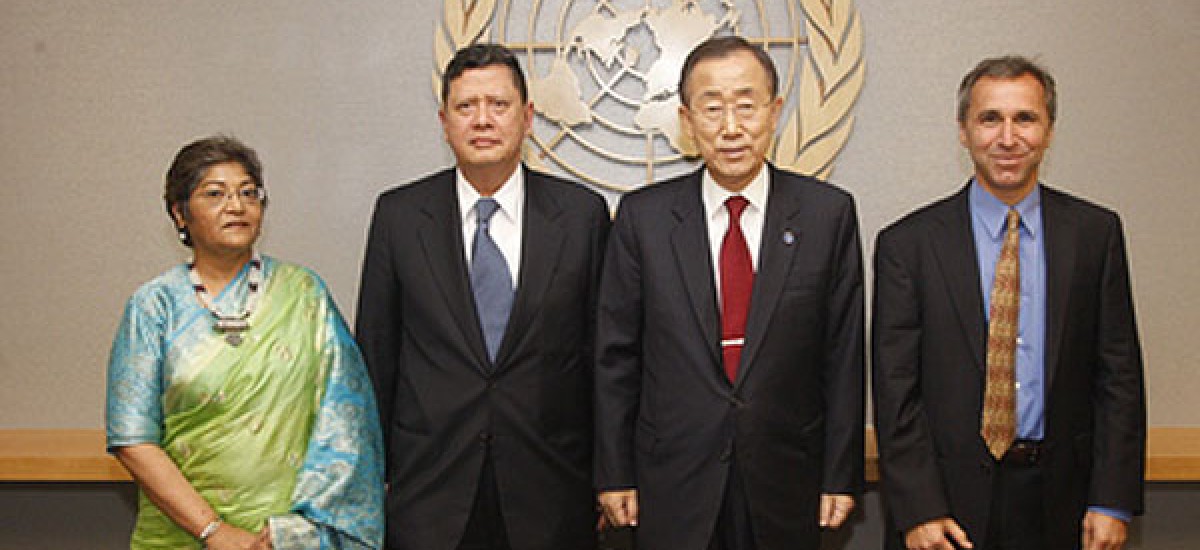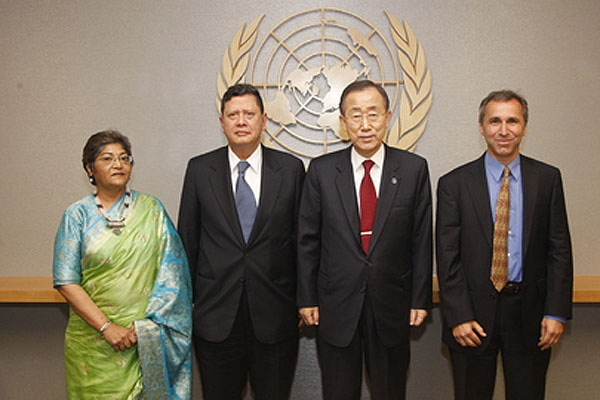The Island newspaper continues to publish leaks from the report produced by the Panel appointed by the UN Secretary General to look into post-war accountability in Sri Lanka. Groundviews has contextualised in detail the Executive Summary and Parts 1, 2, 3, 4 and 5 of the leaks.
The Island published today Part 6, which focusses on, inter alia, the conditions faced by IDPs interned in camps after the end of war, allegations of the use of cluster munitions or white phosphorus and torture in detention of suspected LTTE cadre.
As before, we provide context and background information to frame these highlights.
“Civilians emerging from the conflicts zone were initially housed in a network of 21 IDP sites spread across Jaffna, Mannar, Trincomalee and Vavuniya districts. Most were eventually sent to Menik Farm near Vavuniya, which at its peak, housed around 250,000 IDPs, making it one of the largest IDP sites in the world and one of the largest population centres in Sri Lanka.”
“Menik Farm and other IDP sites were closed camps, guarded by the military and surrounded by barbed wire. Essentially, the entire Vanni IDP population was detained and not allowed to leave.”
“… when IDPs came out in larger numbers, the international agencies failed to take a common position on the pre-conditions. Many international agencies continued to provide assistance, in spite of the dramatically substandard conditions that prevailed at Menik Farm.”
“[In Menik Farm] While many persons suffered from depression, psychological support was not allowed by the Ministry of Social Services, and some IDPs committed suicide. Some died while awaiting passes to get basic medical treatment or died from preventable diseases.”
“Provision for food, water, shelter and sanitation at Menik Farm was highly inadequate to cope with the large numbers of people who arrived in April and May.”
“Some women were forced to perform sexual acts in exchange for food, shelter or assistance in camps.”
“While basic conditions at Menik Farm were inhumane, a Western Union (money transfer facility) soon opened, and thousands of people, many of them LTTE with connections among the Diaspora, were able to buy their way out of the camps by bribing the military.”
“The sounds of beating and screams could be heard from the interrogation tents. The UNHCR recorded at least nine cases of torture in detention. Some detainees were taken away and not returned.”
“During the screening process, the SLA removed those suspected of being LTTE members to separate detention facilities at Boossa and Omanthai, generally under the Prevention of Terrorism Act or the Emergency Regulations. In many cases the SLA did not provide family members with notification for the detention of their relatives; neither did it identify the criteria by which it was identifying suspected LTTE.”
“According to the September 2010 figures provided to the Panel by the Government, “approximately 6,500” alleged ex-combatants were undergoing “short term” rehabilitation, “around 3,500″ were undergoing term rehabilitation”, and “less than 1,500” were identified as “hard core” LTTE and designated for prosecution.”
“There is virtually no information about the conditions at these separate LTTE “surrendee” sites, due to a deliberate lack of transparency by the Government. The fact that interrogations and investigations as well as “rehabilitation” activities have been ongoing, without any external scrutiny for almost two years, rendered alleged LTTE cadre highly vulnerable to violations such as rape, torture or disappearance, which could be committed with impunity.”
“There are allegations that the SLA used cluster bomb munitions or white phosphorus or other chemical substances against civilians, particularly around PTK and in the second NFZ.”
“Various reports have alleged that the political leadership of the LTTE and their dependents were executed when they surrendered to the SLA.”
“Both President Rajapaksa and Defence Secretary Basil Rajapaksa provided assurances that their surrender would be accepted. These were conveyed by intermediaries to the LTTE leaders, who were advised to raise a white flag and walk slowly towards the army, following a particular route indicated by Basil Rajapaksa.”
“While there is little information on the circumstances of their death, the Panel believes that the LTTE leadership intended to surrender.”


